R. Venkatesan
Second-Order Perturbation Theory-Based Digital Predistortion for Fiber Nonlinearity Compensation
Jun 27, 2021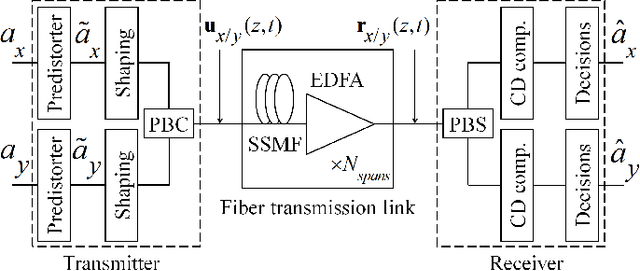
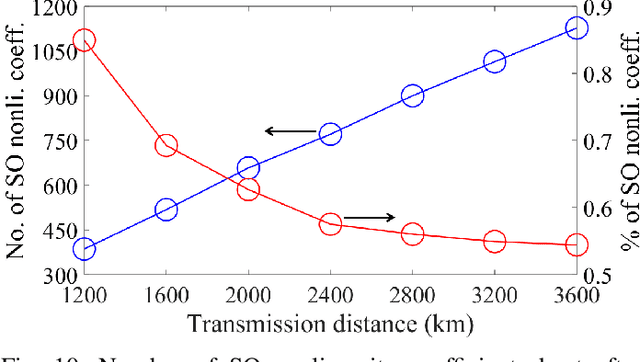


Abstract:The first-order (FO) perturbation theory-based nonlinearity compensation (PB-NLC) technique has been widely investigated to combat the detrimental effects of the intra-channel Kerr nonlinearity in polarization-multiplexed (Pol-Mux) optical fiber communication systems. However, the NLC performance of the FO-PB-NLC technique is significantly limited in highly nonlinear regimes of the Pol-Mux long-haul optical transmission systems. In this paper, we extend the FO theory to second-order (SO) to improve the NLC performance. This technique is referred to as the SO-PB-NLC. A detailed theoretical analysis is performed to derive the SO perturbative field for a Pol-Mux optical transmission system. Following that, we investigate a few simplifying assumptions to reduce the implementation complexity of the SO-PB-NLC technique. The numerical simulations for a single-channel system show that the SO-PB-NLC technique provides an improved bit-error-rate performance and increases the transmission reach, in comparison with the FO-PB-NLC technique. The complexity analysis demonstrates that the proposed SO-PB-NLC technique has a reduced computational complexity when compared to the digital back-propagation with one step per span.
A Joint Technique for Nonlinearity Compensation in CO-OFDM Superchannel Systems
Jun 27, 2021


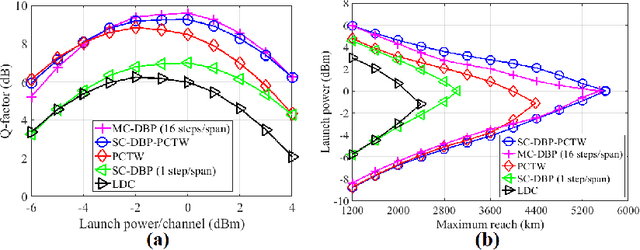
Abstract:We propose a technique combining the singlechannel digital-back-propagation (SC-DBP) with phaseconjugated-twin-wave (PCTW) to compensate nonlinearities in CO-OFDM superchannel systems. This exhibits a similar performance as multi-channel DBP while providing increased transmission reach compared to SC-DBP, PCTW, and linear dispersion compensation (LDC).
PDL Impact on Linearly Coded Digital Phase Conjugation Techniques in CO-OFDM Systems
Jun 27, 2021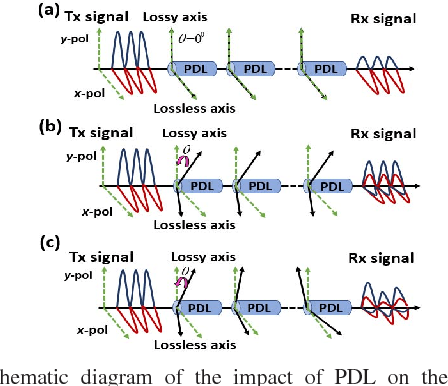

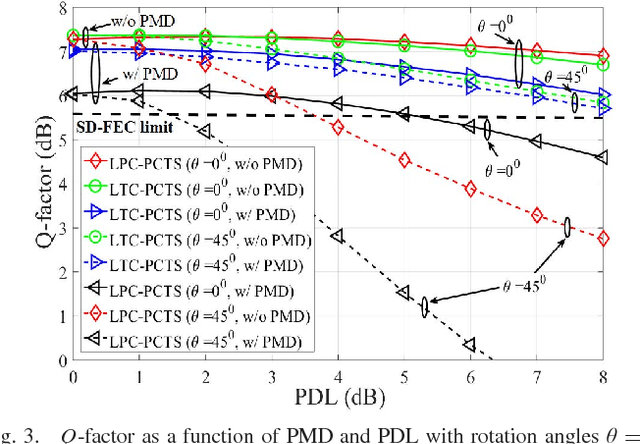
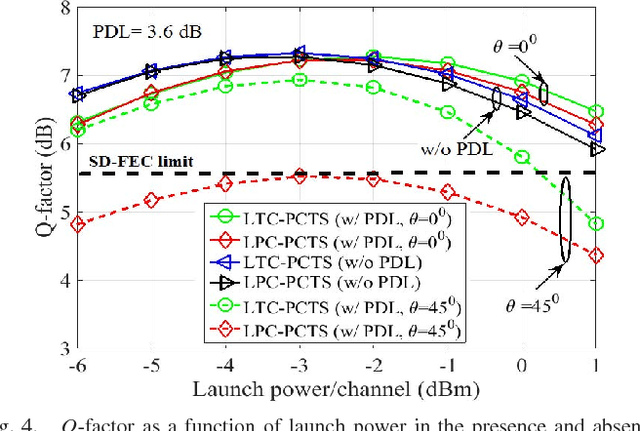
Abstract:We investigate the impact of polarization-dependent loss (PDL) on the linearly coded digital phase conjugation (DPC) techniques in coherent optical orthogonal frequency division multiplexing (CO-OFDM) superchannel systems. We consider two DPC approaches: one uses orthogonal polarizations to transmit the linearly coded signal and its phase conjugate, while the other uses two orthogonal time slots of the same polarization. We compare the performances of these DPC approaches by considering both aligned- and statistical-PDL models. The investigation with aligned-PDL model indicates that the latter approach is more tolerant to PDL-induced distortions when compared to the former. Furthermore, the study using statistical-PDL model shows that the outage probability of the latter approach tends to zero at a root mean square PDL value of 3.6 dB. On the other hand, the former shows an outage probability of 0.63 for the same PDL value.
A Spectrally Efficient Linear Polarization Coding Scheme for Fiber Nonlinearity Compensation in CO-OFDM Systems
Jun 27, 2021Abstract:In this paper, we propose a linear polarization coding scheme (LPC) combined with the phase conjugated twin signals (PCTS) technique, referred to as LPC-PCTS, for fiber nonlinearity mitigation in coherent optical orthogonal frequency division multiplexing (CO-OFDM) systems. The LPC linearly combines the data symbols on the adjacent subcarriers of the OFDM symbol, one at full amplitude and the other at half amplitude. The linearly coded data is then transmitted as phase conjugate pairs on the same subcarriers of the two OFDM symbols on the two orthogonal polarizations. The nonlinear distortions added to these subcarriers are essentially anti-correlated, since they carry phase conjugate pairs of data. At the receiver, the coherent superposition of the information symbols received on these pairs of subcarriers eventually leads to the cancellation of the nonlinear distortions. We conducted numerical simulation of a single channel 200 Gb/s CO-OFDM system employing the LPCPCTS technique. The results show that a Q-factor improvement of 2.3 dB and 1.7 dB with and without the dispersion symmetry, respectively, when compared to the recently proposed phase conjugated subcarrier coding (PCSC) technique, at an average launch power of 3 dBm. In addition, our proposed LPCPCTS technique shows a significant performance improvement when compared to the 16-quadrature amplitude modulation (QAM) with phase conjugated twin waves (PCTW) scheme, at the same spectral efficiency, for an uncompensated transmission distance of 2800 km.
 Add to Chrome
Add to Chrome Add to Firefox
Add to Firefox Add to Edge
Add to Edge